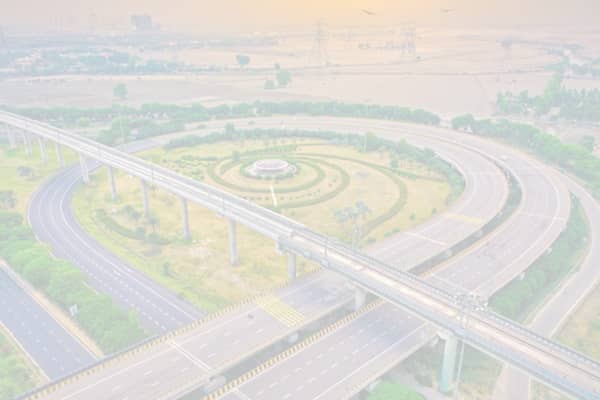KMP Expressway (Western Peripheral Expressway)
The Kundli-Manesar-Palwal Expressway, commonly known as the KMP Expressway, is a monumental achievement in Indian infrastructure. Stretching 135.6 kilometers across the northern part of the country, this expressway not only serves as a vital transportation link but also stands as a testament to modern engineering prowess. This article delves into the various aspects of the KMP Expressway, its impact on the region, and its significance in India’s transportation network.
Overview of the KMP Expressway
The KMP Expressway, also referred to as the Western Peripheral Expressway (WPE), is a six-lane highway designed to ease the heavy traffic congestion in and around Delhi. It begins at Kundli in Sonipat and extends to Dholagarh in Palwal, cutting across several major towns and cities in Haryana. Inaugurated by Prime Minister Narendra Modi on November 19, 2018, the expressway has been a crucial addition to India’s road infrastructure.
The expressway was developed at a staggering cost of ₹9,000 crore. The investment was divided into two major components: ₹2,998 crore for land acquisition and ₹6,400 crore for construction and development. This significant financial outlay reflects the importance of the project in addressing the transportation needs of the region.
Route and Connectivity
The KMP Expressway is strategically located to serve as a bypass for heavy vehicles traveling to and from Delhi. It is designed to divert traffic away from the congested areas within the capital city, thus reducing pollution and easing congestion.
Route Details:
- Starting Point: Kundli, Sonipat
- Ending Point: Dholagarh, Palwal
- Major Towns Covered: Sonipat, Kharkhoda, Bahadurgarh, Badli, Jhajjar, Manesar, Nuh, Sohna, Hathin
The expressway features ten toll entry and exit points, and is equipped with a comprehensive network of underpasses and overpasses. Specifically, there are 52 underpasses and 23 overpasses, including:
- 4 railway overbridges
- 10 overpasses and underpasses at National and State Highways
- 7 overpasses, 9 underpasses at major district roads and rural roads
- 33 agricultural vehicle underpasses
- 31 cattle crossing routes
- 61 pedestrian crossing routes
This extensive infrastructure ensures smooth and safe passage for various types of vehicles, including agricultural and pedestrian traffic.
Impact on Real Estate and Economy
Since its inauguration, the KMP Expressway has had a profound impact on the real estate sector in Haryana and New Delhi. The expressway has spurred development in the towns and cities it passes through, leading to increased property values and economic activity. Areas such as Sonipat, Manesar, and Palwal have seen a surge in real estate investments, driven by improved connectivity and the growth of commercial and residential projects.
The expressway has also contributed to the overall economic development of the region by facilitating easier access to industrial hubs and markets. The Haryana State Industrial and Infrastructure Development Corporation (HSIIDC) plans to build five multi-modal transit stations (MMTS) along the expressway, which will further enhance connectivity and stimulate economic growth.
Public Facilities and Safety Measures
One of the noteworthy features of the KMP Expressway is the range of public facilities designed to enhance the convenience and safety of travelers. The expressway is equipped with:
- Bus Stands: For long-distance and local travel.
- Traffic Police Stations: To ensure law and order and address any road-related issues.
- Truck Service Stations: For the maintenance and refueling of commercial vehicles.
- Food Courts and Toilets: For the comfort of travelers.
- Helipad and Medical Trauma Center: For emergency medical services.
Additionally, the expressway is well-equipped with emergency services. Every 20 km, ambulances, police patrol vehicles, and cranes are stationed to handle any unforeseen incidents swiftly and efficiently.
Also read: Best Places to Visit in August in India
Speed Limits and Regulations
The speed limits on the KMP Expressway are set to ensure the safety of all road users. For light motor vehicles (LMVs), the speed limit is 120 km/h, while heavy motor vehicles (HMVs) are restricted to 100 km/h. However, due to a notable increase in road accidents on the stretch between Manesar and Kundli, the Haryana government has imposed a reduced speed limit of 80 km/h for LMVs and 60 km/h for HMVs in this particular section.
These regulations are part of a broader strategy to enhance road safety and reduce the incidence of traffic-related accidents on the expressway.
Toll Charges and Economic Implications
The toll charges on the KMP Expressway vary depending on the type of vehicle:
- Light Motor Vehicles: ₹1.61 per km
- Light Commercial Vehicles and Mini Buses: ₹2.60 per km
- Two-Axle Vehicles: ₹5.45 per km
- Three-Axle Vehicles: ₹5.95 per km
- Four to Six-Axle Vehicles: ₹8.56 per km
- Seven-Axle and Above Vehicles: ₹10.42 per km
The toll revenue contributes to the maintenance and operational costs of the expressway, ensuring its continued efficiency and safety.
Environmental Considerations
The construction of the KMP Expressway included several environmentally friendly measures. Khas grass was planted along the banks to prevent landslides and improve air quality by absorbing carbon dioxide. Additionally, trees such as Arjun, Neem, and Shisham were planted along the expressway to enhance the green cover and promote ecological balance.
Future Developments and Updates
Recent updates to the KMP Expressway include the planned DND-Faridabad-KMP Expressway extension, expected to be operational by December 2023. This 59 km stretch will connect the Ring Road and DND flyover with the KMP Expressway near Sohna, reducing congestion in Ashram-Faridabad and improving connectivity.
Union Road Transport and Highways Minister Nitin Gadkari has announced the development of a six-lane highway connecting to the KMP Expressway section of NH 148. This development aims to further enhance connectivity between Noida, Ghaziabad, and North and East Delhi, thereby benefiting regional transportation and economic activities.
Conclusion
The KMP Expressway stands as a monumental achievement in Indian infrastructure, reflecting the country’s commitment to improving its transportation network. With its extensive length, state-of-the-art facilities, and significant impact on regional development, the KMP Expressway has transformed the way people and goods move across northern India.
Its role in reducing traffic congestion, enhancing real estate value, and supporting economic growth cannot be overstated. As further developments and extensions are planned, the KMP Expressway will continue to play a crucial role in shaping the future of transportation in India.




Post Comment